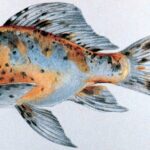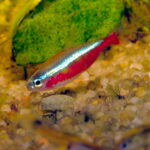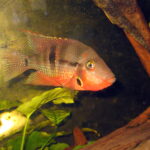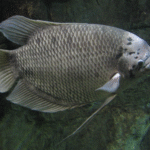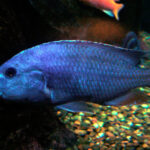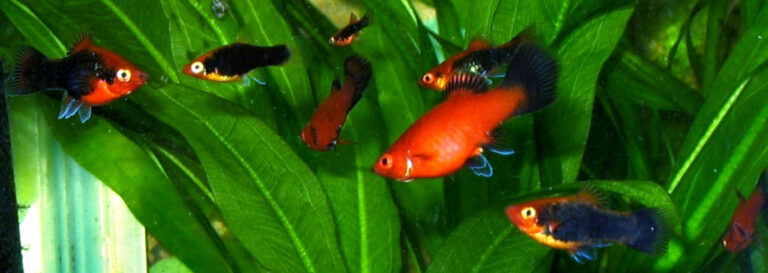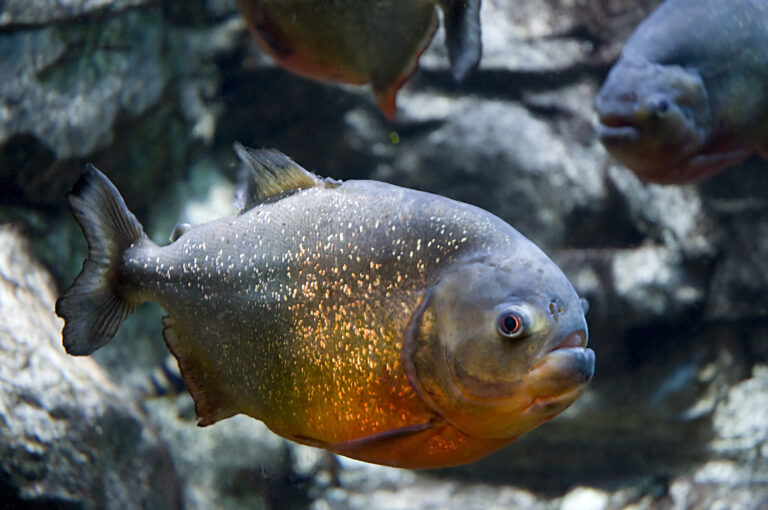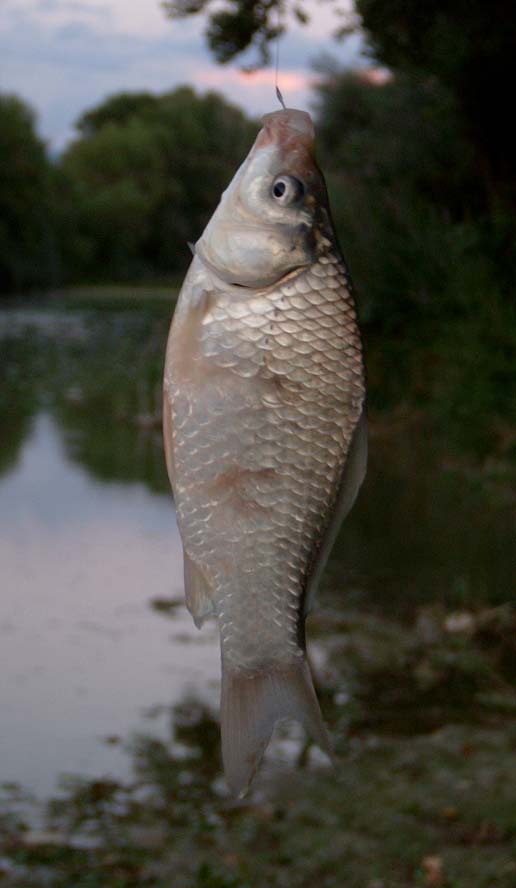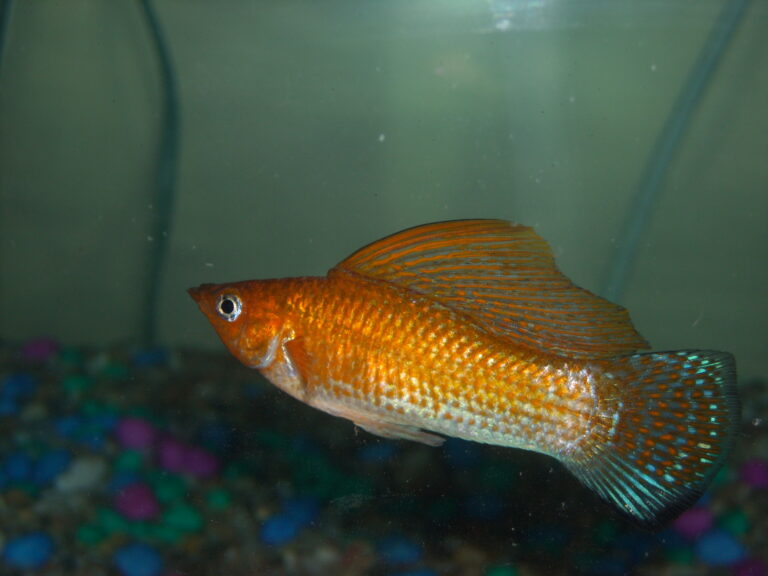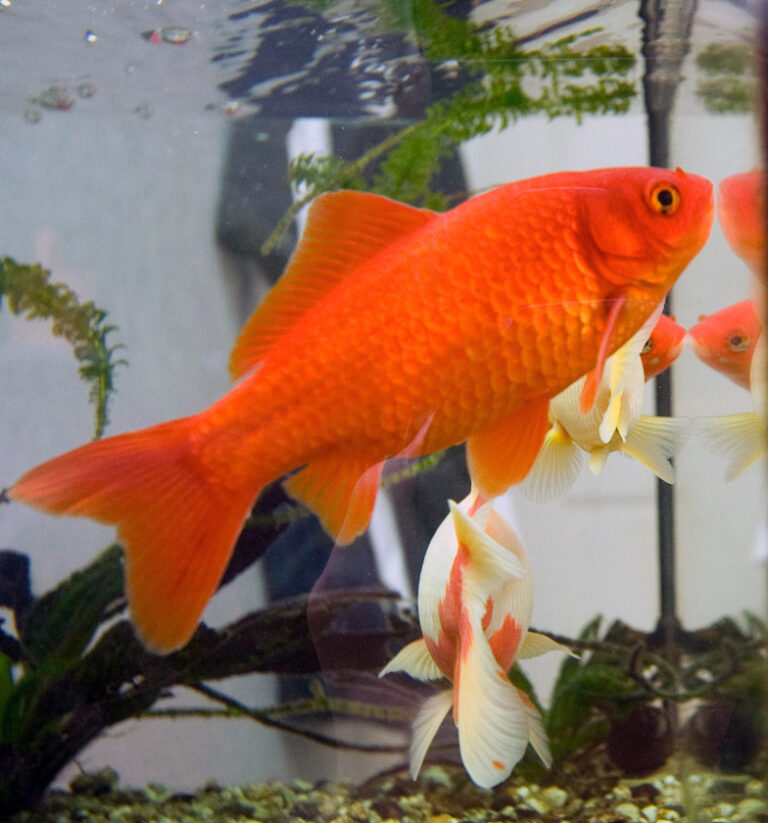Crown Tail Betta
By Ryan Maron | Last Modified: June 10, 2025
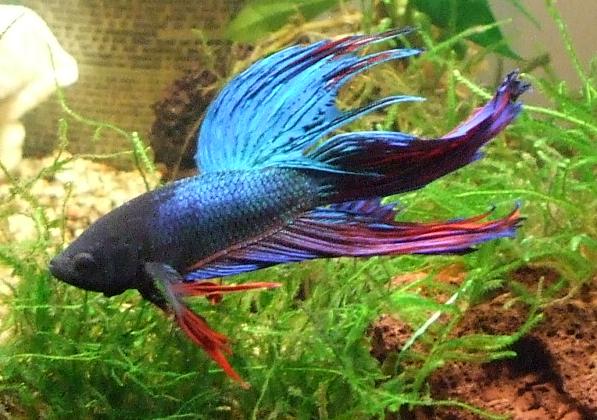
The Crown Tail Betta stands as one of aquaculture’s most distinctive ornamental fish, renowned for its dramatically elongated, spiky fins that resemble the spokes of a crown. This stunning freshwater species, scientifically known as Betta splendens, represents a selectively bred variation of the traditional Siamese fighting fish that has captivated aquarium enthusiasts worldwide through its unique aesthetic appeal and complex behavioral patterns.
Beyond its ornamental value, the Crown Tail Betta plays a significant role in the global aquarium trade, contributing millions of dollars annually to the pet industry while serving as an accessible entry point for novice aquarists. These fish demonstrate remarkable adaptability to captive environments, yet their specialized care requirements and territorial nature make them fascinating subjects for studying aggressive behavior, territorial establishment, and solitary fish dynamics in controlled aquatic ecosystems.
| Feature | Details |
| Common Name | Crown Tail Betta |
| Scientific Name | Betta splendens |
| Family | Osphronemidae |
| Typical Size | 6-8 cm (2.4-3.1 inches), 2-5 grams |
| Habitat | Shallow freshwater environments |
| Diet | Carnivorous – insects, larvae, small crustaceans |
| Distribution | Southeast Asia (captive-bred globally) |
| Conservation Status | Least Concern (wild populations) |
Taxonomy & Classification
The Crown Tail Betta belongs to the family Osphronemidae, which encompasses the labyrinth fish group characterized by their specialized breathing apparatus. Within the genus Betta, Betta splendens represents the most widely distributed and commercially important species, with the Crown Tail variety emerging through selective breeding programs initiated in the 1990s.
Taxonomically, all Crown Tail Bettas share the same scientific classification as their wild-type counterparts, with the distinctive fin morphology resulting from genetic mutations that affect fin ray development and branching patterns. The species falls under the order Anabantiformes, which includes approximately 462 species of labyrinth fish distributed across Africa and Asia.
The Crown Tail phenotype was first developed by Indonesian breeder Achmad Yusuf in 1997, who isolated fish displaying excessive fin ray extension beyond the fin membrane. This genetic trait, now known as the “crown tail gene,” follows Mendelian inheritance patterns and can be combined with various color mutations to produce diverse Crown Tail Betta varieties.
Modern Crown Tail Bettas are classified into several subcategories based on fin ray extension, including single ray, double ray, and crossed ray variations. Each classification represents different degrees of genetic expression, with crossed ray specimens displaying the most dramatic fin extensions and commanding premium prices in the aquarium trade.
Physical Description
The Crown Tail Betta exhibits the most distinctive fin morphology among all Betta splendens varieties, with dramatically elongated fin rays that extend well beyond the fin membranes, creating a spiky, crown-like appearance. Male specimens typically display more pronounced fin extensions, reaching lengths of 15-20 millimeters beyond the membrane, while females show modest extensions of 5-10 millimeters.
Body coloration in Crown Tail Bettas spans the complete spectrum available in domestic Betta populations, including solid colors, bicolors, multicolors, and metallic variations. The most prized specimens display intense red, blue, or steel blue coloration with iridescent scales that reflect light dramatically under aquarium lighting conditions.
The distinctive fin structure results from genetic mutations affecting the development of fin ray branching patterns. Instead of normal fin ray termination at the membrane edge, Crown Tail Bettas exhibit continued ray growth, creating the characteristic spiky appearance. This mutation affects all fins, including the dorsal, anal, caudal, and pectoral fins, though the caudal fin displays the most dramatic extension.
Body size remains consistent with standard Betta splendens parameters, with males reaching 6-8 centimeters in total length and females slightly smaller at 5-7 centimeters. The elongated fins can add an additional 1-2 centimeters to the overall length, creating an impressive visual impact that distinguishes Crown Tail Bettas from other varieties.
Sexual dimorphism is pronounced in Crown Tail Bettas, with males displaying significantly larger fins, more vibrant coloration, and longer fin ray extensions. Females exhibit shorter fins, more subdued coloration, and a fuller body profile, particularly when gravid with eggs.
Habitat & Distribution
Crown Tail Bettas, as artificially selected variants of Betta splendens, do not occur naturally in wild populations. The parent species originates from the shallow freshwater environments of Southeast Asia, including Thailand, Cambodia, Laos, and Vietnam, where they inhabit rice paddies, shallow ponds, and slow-moving streams with dense aquatic vegetation.
Wild Betta splendens populations thrive in environments characterized by warm water temperatures ranging from 24-30°C, soft to moderately hard water with pH levels between 6.0-7.5, and low dissolved oxygen content. These conditions favor the species’ labyrinth organ adaptation, which allows them to extract atmospheric oxygen directly from the water surface.
The commercial production of Crown Tail Bettas occurs primarily in Southeast Asian breeding facilities, particularly in Thailand, Indonesia, and Malaysia, where optimal tropical conditions can be maintained year-round. These facilities utilize controlled pond systems that replicate natural habitat conditions while allowing for selective breeding programs to maintain the Crown Tail phenotype.
In captive environments, Crown Tail Bettas adapt readily to standard aquarium conditions, though they prefer warm water temperatures between 25-28°C and slightly acidic to neutral pH levels. The species demonstrates remarkable tolerance for varying water parameters, contributing to their popularity among beginning aquarists.
Different Betta fish varieties have been developed through selective breeding programs worldwide, though the Crown Tail variety remains most successfully produced in regions with stable tropical climates that support large-scale breeding operations.
Diet & Feeding Behavior
Crown Tail Bettas maintain the carnivorous feeding habits characteristic of all Betta splendens, with dietary preferences strongly favoring protein-rich prey items. In natural environments, the parent species consumes insects, insect larvae, small crustaceans, and zooplankton, utilizing their upturned mouths to capture prey from the water surface.
The feeding behavior of Crown Tail Bettas demonstrates typical labyrinth fish hunting patterns, with individuals actively pursuing prey items and displaying aggressive strikes when feeding opportunities arise. Their elongated fins may slightly impede swimming efficiency compared to short-finned varieties, but this limitation rarely affects their ability to capture food in controlled aquarium environments.
Optimal nutrition for Crown Tail Bettas requires high-quality protein sources, with commercial pellet foods formulated specifically for Betta species providing balanced nutrition. Supplemental feeding with live or frozen foods, including bloodworms, brine shrimp, and daphnia, enhances coloration and supports optimal fin development.
Feeding frequency for adult Crown Tail Bettas should follow a schedule of small meals twice daily, with portion sizes adjusted to prevent overfeeding and subsequent water quality degradation. The species exhibits a tendency toward overeating, making portion control essential for maintaining optimal body condition and preventing obesity-related health issues.
Juvenile Crown Tail Bettas require more frequent feeding schedules, with three to four small meals daily supporting rapid growth and proper fin development. During this critical development phase, protein content should comprise 40-45% of the total diet to support the intensive metabolic demands of fin ray extension and body growth.
Behavior & Adaptations
Crown Tail Bettas exhibit the characteristic territorial and aggressive behaviors typical of all Betta splendens, with males displaying particularly intense aggression toward other males of the same species. This behavior stems from evolutionary adaptations for resource competition and reproductive success in shallow, resource-limited environments.
The territorial behavior of Crown Tail Bettas manifests through distinctive threat displays, including fin flaring, gill cover extension, and aggressive swimming patterns. Males establish territories of approximately 30-50 square centimeters in aquarium environments, defending these areas vigorously against perceived intruders.
The species demonstrates remarkable adaptability to varying environmental conditions, utilizing their labyrinth organ to extract atmospheric oxygen when dissolved oxygen levels decrease. This physiological adaptation allows Crown Tail Bettas to survive in poorly oxygenated water conditions that would be lethal to most other fish species.
Crown Tail Bettas display complex behavioral patterns during feeding, including learned responses to feeding schedules and recognition of their primary caretaker. Many individuals develop conditioned responses to visual cues, approaching the water surface when their caretaker approaches the aquarium.
The elongated fins of Crown Tail Bettas may influence their swimming behavior, with some individuals displaying modified swimming patterns to accommodate their elaborate fin extensions. Despite this potential limitation, most Crown Tail Bettas maintain normal activity levels and demonstrate typical Betta behavioral patterns.
Stress responses in Crown Tail Bettas include color fading, reduced activity levels, and fin clamping behaviors. These fish are particularly sensitive to water quality fluctuations and environmental stressors, making consistent aquarium management essential for maintaining optimal behavioral patterns.
Reproduction & Life Cycle
Crown Tail Betta reproduction follows the bubble nest breeding pattern characteristic of all Betta splendens, with males constructing elaborate bubble nests at the water surface using saliva-coated air bubbles. The courtship process involves complex behavioral displays, including fin flaring, color intensification, and swimming patterns designed to attract females.
The breeding process begins with the male establishing a territory and constructing a bubble nest, typically beneath floating plants or in a sheltered corner of the breeding tank. Nest construction can take several hours to complete, with males meticulously placing each bubble to create a stable structure capable of supporting developing eggs.
Spawning occurs through a characteristic embrace beneath the bubble nest, with the female releasing eggs while the male simultaneously releases sperm to fertilize them. A typical spawning event produces 100-500 eggs, depending on the female’s size and condition. The male immediately collects the eggs in his mouth and places them individually within the bubble nest.
Following spawning, the male assumes complete responsibility for egg and fry care, defending the nest territory aggressively and tending to the developing eggs. The incubation period lasts 24-36 hours at temperatures of 27-28°C, with fry becoming free-swimming approximately 3-4 days after hatching.
Crown Tail fry development follows standard Betta splendens patterns, with the distinctive fin ray extensions becoming apparent at 8-12 weeks of age. Full Crown Tail phenotype expression requires 4-6 months of development, with the most dramatic fin extensions appearing as fish reach sexual maturity.
The genetic inheritance of Crown Tail characteristics follows Mendelian patterns, with the trait being recessive in nature. Breeding two Crown Tail parents produces 100% Crown Tail offspring, while crosses between Crown Tail and normal-finned Bettas produce heterozygous offspring that may display intermediate fin characteristics.
Predators & Threats
In natural environments, wild Betta splendens populations face predation pressure from larger fish species, aquatic insects, and amphibians. However, Crown Tail Bettas exist exclusively in captive environments where traditional predation pressures are eliminated through proper aquarium management.
The primary threats to Crown Tail Bettas in captivity include improper water conditions, aggressive tankmates, and diseases associated with their elaborate fin structures. The elongated fins make these fish particularly susceptible to fin rot, a bacterial infection that can rapidly destroy fin tissue if left untreated.
Aggressive tankmates pose significant risks to Crown Tail Bettas, as their flowing fins attract fin-nipping species and their territorial nature creates conflicts with other aggressive fish. Suitable tankmates must be carefully selected to avoid both predation and harassment of the Crown Tail Betta.
Environmental stressors, including temperature fluctuations, poor water quality, and inadequate nutrition, can compromise the immune system of Crown Tail Bettas, increasing their susceptibility to various diseases. The species requires stable environmental conditions to maintain optimal health and prevent stress-related mortality.
Breeding facilities face threats from disease outbreaks that can devastate entire populations of Crown Tail Bettas. Common diseases include ich, velvet disease, and various bacterial infections that spread rapidly through densely populated breeding systems.
Human-induced threats include habitat destruction in areas where wild Betta populations exist, though this primarily affects wild-type populations rather than Crown Tail varieties. The aquarium trade’s demand for Crown Tail Bettas has led to intensive breeding programs that maintain genetic diversity through careful selection protocols.
Conservation Status
The Crown Tail Betta, as a domestically bred variety of Betta splendens, does not have an independent conservation status. The parent species, Betta splendens, is classified as Least Concern by the International Union for Conservation of Nature (IUCN), indicating stable wild populations throughout their native range.
Wild populations of Betta splendens maintain genetic diversity and stable population numbers across their Southeast Asian distribution range. However, habitat modification and agricultural intensification in some regions have led to localized population declines, particularly in areas where rice paddies have been converted to other land uses.
The commercial breeding of Crown Tail Bettas has created a sustainable industry that reduces pressure on wild populations while maintaining genetic diversity through selective breeding programs. Major breeding facilities maintain breeding stock from multiple genetic lines to prevent inbreeding and preserve the Crown Tail phenotype.
Conservation efforts for wild Betta splendens populations focus on habitat preservation and water quality maintenance in agricultural regions where the species naturally occurs. These efforts benefit not only wild Betta populations but also the broader ecosystem of Southeast Asian freshwater environments.
The popularity of Crown Tail Bettas in the aquarium trade has contributed to increased awareness of Southeast Asian freshwater ecosystems and the importance of maintaining water quality in agricultural regions. Educational programs associated with the aquarium trade often emphasize the connection between captive-bred fish and their wild counterparts.
Genetic conservation of the Crown Tail trait requires careful breeding management to maintain the phenotype while avoiding the negative effects of inbreeding. Professional breeding facilities maintain detailed breeding records and genetic diversity protocols to ensure the long-term sustainability of Crown Tail Betta populations.
Human Interaction
Crown Tail Bettas represent one of the most significant human-fish interactions in the ornamental aquaculture industry, with millions of specimens traded annually worldwide. The development of the Crown Tail phenotype demonstrates human ability to selectively breed for specific aesthetic traits while maintaining fish health and vitality.
The aquarium trade’s embrace of Crown Tail Bettas has created economic opportunities for breeders, retailers, and support industries throughout Southeast Asia and internationally. Premium Crown Tail specimens can command prices ranging from $20-100 per individual, depending on color intensity, fin quality, and genetic lineage.
Educational value of Crown Tail Bettas extends beyond simple pet ownership, with these fish serving as excellent subjects for teaching genetics, selective breeding, and aquatic ecosystem management. Many schools and educational institutions utilize Crown Tail Bettas in biology curricula to demonstrate inheritance patterns and selective breeding principles.
The therapeutic benefits of Crown Tail Betta ownership have been documented in various healthcare settings, where these fish provide calming visual stimulation and low-maintenance companionship for patients and residents. Their vibrant colors and graceful movements create positive psychological effects in clinical environments.
Competitive showing of Crown Tail Bettas has developed into an international hobby, with standardized judging criteria evaluating fin extension, color intensity, body proportion, and overall health. These competitions drive continued improvement in breeding techniques and maintain high standards for Crown Tail Betta quality.
Research applications for Crown Tail Bettas include studies on fin regeneration, color genetics, and behavioral adaptations. Their well-documented genetics and standardized breeding protocols make them valuable research subjects for understanding selective breeding effects and developmental biology.
Interesting Facts
Crown Tail Bettas can survive in remarkably small volumes of water due to their labyrinth organ, though this adaptation should never be exploited through inadequate housing. The minimum recommended tank size for a single Crown Tail Betta is 19 liters, providing adequate swimming space and environmental stability.
The dramatic fin extensions of Crown Tail Bettas can regenerate if damaged, though the regenerated tissue may not perfectly match the original fin structure. This remarkable healing ability allows Crown Tail Bettas to recover from minor fin injuries, though prevention remains preferable to treatment.
Individual Crown Tail Bettas can recognize their owners and learn to associate human presence with feeding times. Some specimens demonstrate complex learned behaviors, including swimming through hoops, following fingers along the glass, and responding to their names.
The bubble nests constructed by male Crown Tail Bettas can contain thousands of individual bubbles, with some nests reaching diameters of 10-15 centimeters. The construction process requires significant energy expenditure and indicates excellent health and breeding condition in males.
Crown Tail Bettas have been successfully bred in space-simulation experiments, demonstrating their resilience to altered gravitational conditions. These studies contribute to understanding how aquatic life might adapt to space travel and extraterrestrial colonization scenarios.
The genetics of Crown Tail fin development involve multiple genes working in combination, making the trait more complex than simple single-gene inheritance patterns. Researchers continue to study these genetic interactions to better understand fin development and potentially apply this knowledge to regenerative medicine.
Some Crown Tail Bettas exhibit remarkable longevity for small tropical fish, with properly maintained specimens living 4-5 years in captivity. This extended lifespan allows for strong human-fish bonds to develop and provides opportunities for long-term behavioral observations.
Frequently Asked Questions
Can Crown Tail Bettas live with other fish species?
Crown Tail Bettas can coexist with carefully selected tankmates, but their territorial nature and elaborate fins create specific compatibility requirements. Suitable companions include peaceful, non-aggressive species that will not nip fins, such as small tetras, corydoras catfish, or certain snail species. However, other Betta species, aggressive fish, or fin-nipping species should be avoided entirely.
How long do Crown Tail Bettas typically live in captivity?
Crown Tail Bettas generally live 2-4 years in properly maintained aquarium environments, with exceptional specimens reaching 5 years under optimal conditions. Lifespan depends heavily on water quality, nutrition, genetic factors, and overall care quality. The elaborate fins of Crown Tail varieties may make them slightly more susceptible to certain diseases, potentially affecting longevity compared to short-finned varieties.
What water temperature is ideal for Crown Tail Bettas?
Crown Tail Bettas thrive in water temperatures between 25-28°C (77-82°F), with 26-27°C being optimal for most individuals. Consistent temperature maintenance is crucial, as fluctuations can stress these fish and compromise their immune systems. Water temperatures below 22°C or above 30°C can be harmful and should be avoided through proper aquarium heating and temperature monitoring.
How often should Crown Tail Bettas be fed?
Adult Crown Tail Bettas should be fed small portions twice daily, with each feeding consisting of 2-3 high-quality pellets or an equivalent amount of live/frozen food. Overfeeding is a common problem that can lead to obesity and water quality issues. One day of fasting per week is beneficial for digestive health and helps prevent bloating problems common in captive Bettas.
Conclusion
The Crown Tail Betta represents a remarkable achievement in selective breeding, combining the natural resilience and behavioral complexity of Betta splendens with stunning ornamental characteristics that have captured the attention of aquarists worldwide. Their unique fin morphology, vibrant coloration, and manageable care requirements make them accessible to beginners while offering enough complexity to challenge experienced aquarists. As living examples of human influence on fish genetics and development, Crown Tail Bettas continue to contribute to our understanding of selective breeding, aquatic husbandry, and the delicate balance between aesthetic enhancement and animal welfare in the ornamental fish industry.
Share The Article:
More Fish Species:
-
Tuxedo Platy
The Tuxedo Platy (Xiphophorus maculatus) stands as one of the most recognizable and beloved freshwater aquarium fish species, distinguished…
-
Red Belly Piranha
The Red Belly Piranha (*Pygocentrus nattereri*) stands as one of South America’s most misunderstood freshwater predators, wielding razor-sharp teeth…
-
Flame Tetra
The Flame Tetra (Hyphessobrycon flammeus) stands as one of the most recognizable and beloved freshwater aquarium species in the…
-
Goldfish
The goldfish (Carassius auratus) stands as one of the most culturally significant and scientifically fascinating species in freshwater aquaculture…
-
Silver Molly
The Silver Molly (*Poecilia sphenops*) stands as one of the most recognizable and adaptable freshwater fish species in both…
-
Telescope Goldfish
The Telescope Goldfish (Carassius auratus) represents one of the most distinctive and recognizable varieties of fancy goldfish in the…
Discover
-
Beluga Fishing: Techniques That Actually Work (Not Theory)
When it comes to beluga fishing, there’s a world of difference between what you read in theory and what…
-
Master Deep Ocean Fishing: Proven Methods for Massive Catches
There’s something almost magical about heading far offshore, where the continental shelf drops away and you’re floating above thousands…
-
Walleye vs Bass: Different Strategies for Freshwater Predators
I still remember my first dedicated walleye trip back in 2009. After fifteen years of chasing mostly bass, I…
-
7 Shark Fishing Tactics That Actually Work (Expert Guide)
Shark fishing remains one of those bucket-list experiences that separates casual anglers from the truly adventure-hungry. But here’s the…
-
7 Best Fly Fishing Rods for Beginners in 2025 (Tested by a Pro)
Ask any fly angler what their most important piece of gear is, and most will point to their rod….
-
East Coast Surf Fishing: Targeting Striped Bass and Bluefish from Shore
When I first tried East Coast surf fishing nearly 15 years ago, I was absolutely terrible at it. I…
Discover
-
How to Become a Better Fisherman in 2025: Master These 5 Skills
There’s something magical about that moment when your line goes tight and you feel the unmistakable pull of a…
-
Why Your Red Drum Strategy Is All Wrong (Fix It Today)
Last October, I was fishing the eastern shore of Lake Michigan near Ludington with my buddy Mike. Cold front…
-
Spinner Shark
The Spinner Shark (Carcharhinus brevipinna) stands as one of the ocean’s most distinctive and acrobatic predators, earning its name…
-
Fly Fishing vs Spinning Reels: Choosing the Right Technique
If there’s one debate that never seems to end in fishing circles, it’s fly fishing versus spinning gear. I’ve…
-
Colorful Tetra Fish Types Every Aquarium Owner Should Know
When I set up my first freshwater aquarium years ago, tetras quickly became my go-to fish. These colorful little…
-
Fishing Ethics: Conservation, Catch-and-Release, and Angler Responsibility
I was ten years old when my grandfather caught me throwing rocks at a school of bluegill near our…


